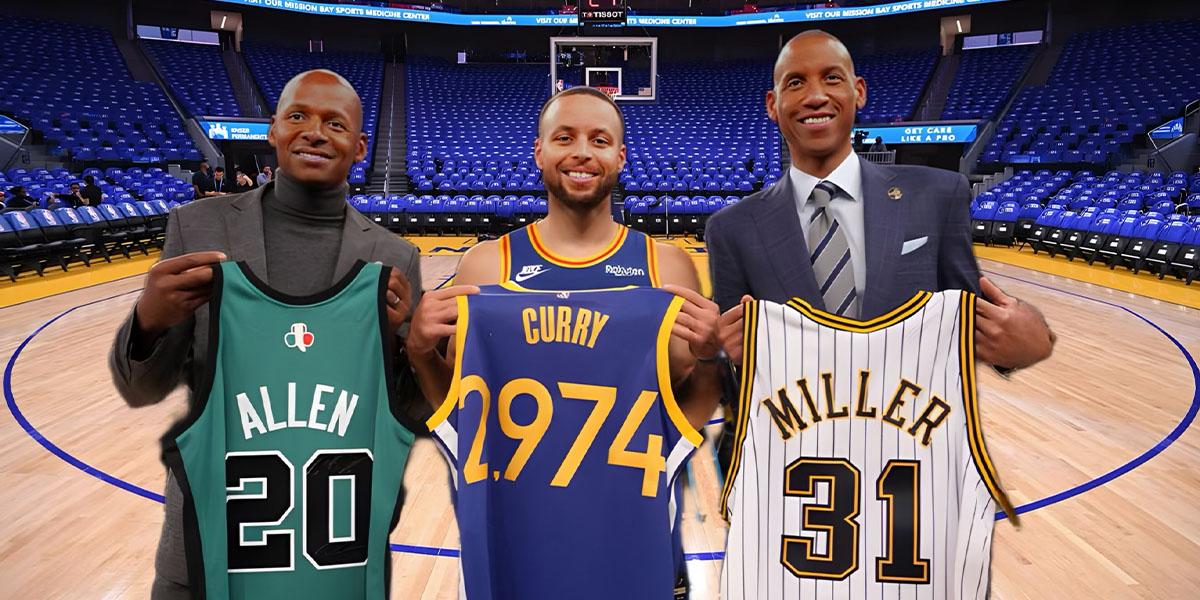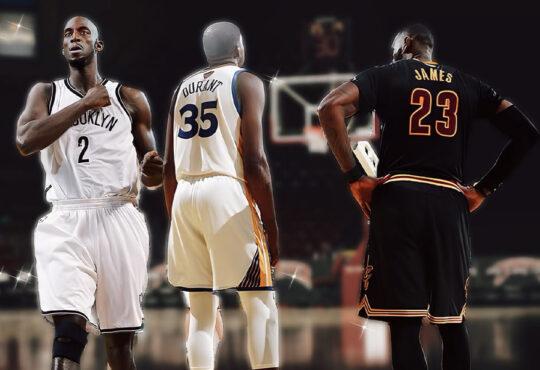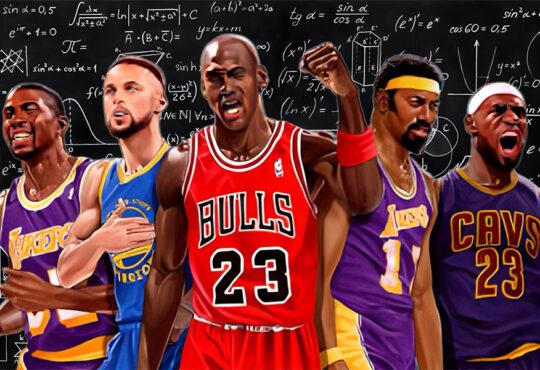
The Evolution of the NBA Three-Point Shot: From Novelty to Necessity
When the National Basketball Association (NBA) introduced the three-point line for the 1979-80 season, it was seen as a novelty. Today, it has become an indispensable part of the modern basketball arsenal. This article delves into the evolution of the three-point shot, shedding light on how it has transformed the gameplay and strategic dynamics of the NBA.
The Inception of the Three-Point Shot: From ABA Gimmick to NBA Game Changer
The introduction of the three-point shot in professional basketball can be traced back to the late 1960s when the American Basketball Association (ABA) employed it as a tactic to compete with the National Basketball Association (NBA). Seeking to bring a unique dimension to the game and attract fans, the ABA incorporated the three-point line in exhibition games and eventually went on to make it an official part of its gameplay.
Despite the ABA’s success in integrating the three-pointer, initial reactions to the new shot were mixed. Traditional fans of the sport believed that the unique scoring opportunity would undermine basketball’s core principles: teamwork and ball movement. As a result, when the ABA merged with the NBA ahead of the 1976-77 season, the NBA resisted adopting the three-point line immediately, waiting until the 1979-80 season to embrace it.
In the first season featuring the three-point line, NBA teams were hesitant to rely on the new shot, with an average of just 2.8 attempts per game. These three-point attempts constituted a mere 3% of total field goal tries. As teams continued to prioritize traditional inside scoring, the three-point shot was seen as a novelty that could disrupt and even jeopardize pre-established offensive strategies.
However, it didn’t take long for players and teams to recognize the strategic value of the three-pointer. The potential for additional scoring combined with the need to extend defensive efforts away from the basket opened up new avenues for offensive creativity. Coaches began to experiment with integrating the shot into their plans, and players started to hone their long-range shooting skills.
As the competitive advantages of the three-point shot became more apparent, its popularity began to surge. Coaches and players alike realized the significance of the 50% increase in points scored beyond the arc, which had the capacity to reshape the dynamic of entire games. This realization marked a turning point for the league, as the three-pointer shifted from a perceived gimmick towards a critical component of team strategy.
As the NBA embraced the three-point shot and its strategic potential, the game underwent a profound transformation, evolving in both its tactical approach and fan appeal. Although it once opposed the very foundations of basketball, the three-point line now forms an integral part of the league’s identity, garnering popularity and paving the way for a new era of skill and expertise.
The Three-Point Revolution: Trailblazers of the Long-Range Domination
As the NBA began to embrace the strategic potential of the three-point shot, an exceptional breed of long-range specialists emerged, forever changing the perception and significance of the three-pointer. The 1980s and 1990s witnessed the rise of these pioneers who showcased the true power of accurate shooting from beyond the arc.
Larry Bird: The Vanguard of the Three-Point Revolution
A remarkable player known for his exceptional shooting skills and grit, Larry Bird served as one of the pivotal figures at the vanguard of the three-point revolution. Bird’s ability to hit clutch shots, often under immense pressure and from seemingly impossible angles, set him apart as one of the most formidable players of his generation.
- Confidence and Skills Beyond the Arc: Bird’s confidence coupled with his unique style of play served to embolden his teammates and demoralize his opponents. His exceptional shooting skills from beyond the arc made him a feared opponent and a revered figure in basketball circles. Bird’s display of formidable skill from the three-point line played a crucial role in bringing the long-range shot to the spotlight. His supreme accuracy and cool demeanor shone particularly during the NBA’s Three-Point Contest events. Winning the inaugural contest in 1986, and retaining his crown for the following two years, Bird’s hat trick is still seen as one of the most prominent feats in the history of the event. Beyond just scoring, Bird’s three-point shooting abilities opened up the court for his teammates, enabling the Boston Celtics to deploy more versatile, dynamic strategies.
- Impact as a Three-Time NBA Champion: As a three-time NBA champion (1981, 1984, and 1986) with the Boston Celtics, Bird’s impact on the game was beyond dispute. The three-point shots he executed during crucial moments of games often proved to be game-changers, reinforcing the value of the long-distance attempt in the professional field. Bird demonstrated how a player with exemplary three-point shooting skills could not only command respect on the court but could also significantly alter the outcome of the game.
- The Bird-Johnson Rivalry: A Game-Changing Dynamic: The legendary rivalry between Bird and Magic Johnson added a magnetic dimension to the allure of the three-point shot. Battling for supremacy with the Los Angeles Lakers, Bird often utilized his three-point shooting to gain an edge and swing the game’s momentum in favor of the Celtics. The Bird-Johnson rivalry became a symbolic representation of the shift in basketball tactics during the 1980s. Their head-to-head encounters highlighted the significance of the deep shot, and its potential to change a game’s outcome dramatically. The adoption of the three-pointer as a critical offensive weapon in those high-stake games further emphasized its strategic importance.
In conclusion, Larry Bird’s proficiency as a three-point shooter and his firm belief in its game-changing potential played an undeniable role in the rise of the three-pointer. His performances emboldened future generations of players to master the long-range shot, transforming the trajectory of basketball games across the globe.
Reggie Miller: Unleashing the Power of the Three-Pointer
In the wake of Larry Bird’s illustrious career, the NBA was ripe for a new three-point superstar. Enter Reggie Miller, a player with an insatiable appetite for long-range shooting and an ability to redefine the sport’s strategic dynamics. His prowess with the three-pointer rapidly propelled him to the forefront of the league’s attention and cemented his status as a legendary sharpshooter.
A Markedman from Beyond the Arc: Miller’s adeptness with the three-pointer became the cornerstone of his career. With an uncanny ability to hit shots from long range even under pressure, he quickly became the nemesis of opposing defenders. The 1990s were a testament to Miller’s exceptional skills, as he proved himself one of the league’s most potent players from beyond the arc.
Pinnacle of Success: Record-Breaking Season: The 1995-96 season stands out as a testament to Miller’s extraordinary prowess. In these remarkable months, he racked up an astounding 229 three-pointers – a record at the time – sinking them at a phenomenal accuracy rate of 42.7%. This feat captivated NBA fans and players alike, placing a glaring spotlight on the immense value of an effective three-point shooter.
Shifting the Game’s Tactics: Miller’s efficiency and consistency from behind the line didn’t just earn him personal accolades, but they also sparked a tactical shift across the league. Coaches were propelled into adjusting their defensive strategies and game plans to deal with the threat posed by players with Miller’s unique set of skills. The need to halt or disrupt the efficiency of players like Miller led to the development of new defensive plays and techniques. Simultaneously, teams scrambled to find their own sharpshooters who could match or neutralize Miller’s long-range bombardments. This period led to a profound re-evaluation of the role of the three-pointer in team offensive plans.
Recognizing the Value of the Three-Pointer: The success of players like Miller redefined the perceived potency of the deep shot. The once-underestimated three-pointer began to take center stage in scoring as more players refined their long-range shooting skills. The strategic value of this shot became hard to ignore as observers witnessed how it could significantly tilt the game in favor of a team with accurate three-point shooters.
In conclusion, Reggie Miller’s extraordinary career and his unprecedented success with the three-pointer marked a significant turning point in NBA history. His performances elevated the status of the three-point shot and validated its legitimate value to the sport, thereby inspiring a new era of tactical planning and player development.
Ray Allen: The Evolution of the Three-Point Maestro
Ray Allen emerged as the torchbearer for the art of the three-pointer in the 21st century, further elevating the importance of the deep shot in basketball’s strategic landscape. With a silky-smooth shooting stroke that was nothing short of mesmerizing, Allen carved out a legacy that would inspire a new generation of long-range sharpshooters and solidify the three-point shot as an essential weapon in the modern game.
- A Master of Consistency and Precision: Allen’s storied career was underscored by an uncanny level of consistency and precision in his three-point shooting. Ray Allen refined the art of the long-range shot, demonstrating a level of expertise that would become the gold standard for players seeking to emulate his success. With an efficient release and a keen eye for identifying opportunities beyond the arc, Allen’s shooting prowess was instrumental in defining the role of the three-point specialist in contemporary basketball.
- Accolades: NBA All-Star and Champion: Ray Allen’s mastery of the three-pointer did not go unnoticed, as he was named to the NBA All-Star team ten times throughout his career, a testament to his consistent excellence. Moreover, Allen’s deep shooting skills paid off in the form of two NBA championships, one with the Boston Celtics in 2008 and another with the Miami Heat in 2013. These successes further underscored the persuasive power and undeniable impact of a proficient long-range shooter.
- The Legendary Game 6 Performance: Perhaps Allen’s most iconic moment came during Game 6 of the 2013 NBA Finals, with the Miami Heat facing elimination against the San Antonio Spurs. With the game on the line and the Heat trailing by three points, Allen delivered one of the most memorable shots in NBA history. With less than 6 seconds remaining, Allen launched a three-pointer that tied the game, ultimately forcing overtime, where the Heat would go on to secure the victory. Miami eventually won the NBA championship, further cementing Allen’s status as a clutch player who could deliver on the biggest stage under immense pressure.
- Inspiring the Next Generation: Ray Allen’s extraordinary career served as a driving force for countless young players to sharpen their long-range shooting abilities, many of whom have since become formidable sharpshooters in their own right. With the three-point shot now an integral part of the game’s fabric, players from all positions are continually working to perfect their craft from beyond the arc, largely thanks to the trail blazed by Allen and his predecessors.
In summary, Ray Allen’s contributions to the world of basketball cannot be understated. His precision, consistency, and success as a three-point specialist have undeniably influenced the game’s strategic evolution, solidifying the deep shot as a cornerstone of modern basketball and paving the way for a new generation of sharpshooters.
Celebrating the Three-Point Pioneers: Larry Bird, Reggie Miller, and Ray Allen
Larry Bird, Reggie Miller, and Ray Allen are figured synonymous with the rise of the three-pointer in basketball. These stalwarts are the preeminent trailblazers, revolutionizing the sport through their deep-shooting skills. It was their extraordinary efforts and enduring dedication to the art of the long-range shot that cemented its place in the game’s tactical landscape.
- Redefining the Game: The Crucial Role of The Three-Point Shot: Their consistent and inspired play revealed the true potential of the three-point shot. It went beyond a mere scoring approach and emerged as a game-changing tactical tool—a weapon that could influence scoring runs, swing momentum, and in many ways, dictate game outcomes. Not only did these pioneers redefine the nature of individual games, but their mastery of the three-pointer also paved the way for iconic and influential careers. Their extraordinary talents allowed them to cast long-lasting legacies that extended beyond their playing days, confirming that deep shooting skills added a critical dimension to a player’s skill set and offering a new lens through which the entire league’s strategic outlook could be viewed.
- Inspiring New Generations: The Art of the Three-Point Shot: The legacy left by Bird, Miller, and Allen did not stop at their retirement. Instead, it continues to influence subsequent generations of NBA players. Today, many of the league’s players are dedicating significant effort to replicating the three-point skills exhibited by these pioneers. They recognize that proficiency from beyond the arc isn’t just valuable – it’s critical for success in the modern game. The path paved by these three luminaries serves as a roadmap for current and future athletes looking to leave their own mark on the sport. They have demonstrated that mastery over the long-range shot can lead to remarkable personal achievements and contribute meaningfully to the team’s success.
In conclusion, the extraordinary contributions of Larry Bird, Reggie Miller, and Ray Allen have given the three-pointer its rightful place in basketball. Their pioneering efforts sparked a revolution in the sport that continues to manifest in the pursuit of three-point mastery, ensuring their influence continues to shape the fluid and exciting future of the game.
The Golden State Warriors: Catalysts for the Three-Point Revolution
The true paradigm shift in the history of the three-point shot didn’t happen until the meteoric rise of the Golden State Warriors in the mid-2010s. The team, piloted by the iconic “Splash Brothers” – Stephen Curry and Klay Thompson – introduced a fast-paced, three-point-heavy playstyle that went on to rewrite the strategic playbook for the entire NBA.
The Ascendancy of the “Splash Brothers: Dubbed the “Splash Brothers” because of their uncanny ability to ‘splash’ the net from deep range, Curry and Thompson lit up the NBA with long-range shooting exhibitions like never before. Together, they masterminded a high energy, rapid-fire playstyle that relied heavily on three-pointers, disrupting traditional defensive tactics and creating new challenges for opposing teams. This change in pace, coupled with the sheer volume and effectiveness of their three-point attempts, made every Warriors’ game an electrifying spectacle.
The Shooting Streak of Stephen Curry: While the combined impact of Curry and Thompson was undoubtedly revolutionary, it was Stephen Curry who emerged as the face of this newfound three-point dominance. His constant eruptions from beyond the arc were not just incredibly entertaining but also rewrote the NBA record books. Without a doubt, one of Curry’s most eye-popping accomplishments was setting the record for the most three-pointers made in a single season. In the 2015-16 NBA season, Curry sank an astounding 402 three-pointers – a record that still stands today. His jaw-dropping long-distance feats demonstrated the power of the three-pointer like never before and solidified him as one of the best sharpshooters in the history of the sport.
Revolutionizing the Game: The innovative three-point-centric style of play crafted by the Golden State Warriors sparked a sea change in the way basketball was played at the highest level. Not only did it spur the Warriors to multiple NBA championships, but it also inspired teams across the league to reconsider and frequently rewrite their offensive strategies to incorporate more three-point shooting. The result was a widespread shift in game tactics, elevating the three-pointer from a mere component of offensive strategy to its very cornerstone.
In summary, the Golden State Warriors, particularly the “Splash Brothers”, have had an indelible impact on the evolution of the three-pointer in basketball. By shifting the focus towards long-range shooting, the Warriors spurred a strategic revolution in the NBA that continues to define the game’s current era and will likely influence its future trajectory.
Conclusion
The Three-Point Shot: An Emblem of Basketball’s Evolution: The metamorphosis of the three-point shot from a niche tactic to an indispensable weapon aptly showcases the adaptive and evolutionary nature inherent to competitive sports. Initially seen as a deviation from, or even a threat to, the core fundamentals of basketball, the three-pointer has transcended that perception and now stands as one of the sport’s most essential elements.
A Game-Changing Addition: The strategic significance of the three-point shot cannot be overstated. With its 50% additional value compared to a typical field goal, its inclusion has introduced novel dynamics into the game, making it a crucial factor in offensive planning and a distinguishing characteristic of successful teams. The three-point shot’s impact on the sport has been nothing short of transformative, affecting virtually every aspect of modern basketball.
Redefining Players’ Skillsets: To succeed in the three-point era, athletes have had to adapt and enhance their abilities to align with the evolving demands of the sport. The shift in the game’s emphasis from traditional inside scoring to perimeter shooting has necessitated a widespread development of long-range proficiency among players of various positions. Consequently, the emphasis on the three-point shot has resulted in a plethora of multidimensional talents who can be equally effective both inside and beyond the arc.
Rethinking Performance Metrics: The prominence of the three-pointer has also led to a reevaluation of the criteria used to measure team and individual performance. With the three-point shot now central to the sport’s identity, it has become crucial to consider the relationship between a team’s shooting efficiency from deep and its overall success. Furthermore, these changes have led to advanced metrics such as effective field goal percentage (eFG%) and true shooting percentage (TS%) gaining popularity, which better capture a player’s efficacy in making use of the three-point shot.
In conclusion, the evolution of the three-point shot serves as a microcosm of basketball’s ability to adapt and innovate. The emergence of the long-range shot as less of a novelty and more of a necessity demonstrates how player skills, game strategies, and performance evaluation criteria are intertwined and constantly evolving. Consequently, the continuous development of the three-pointer epitomizes the perpetual desire for growth and improvement that has characterized the inexorable march of basketball throughout its storied history.





